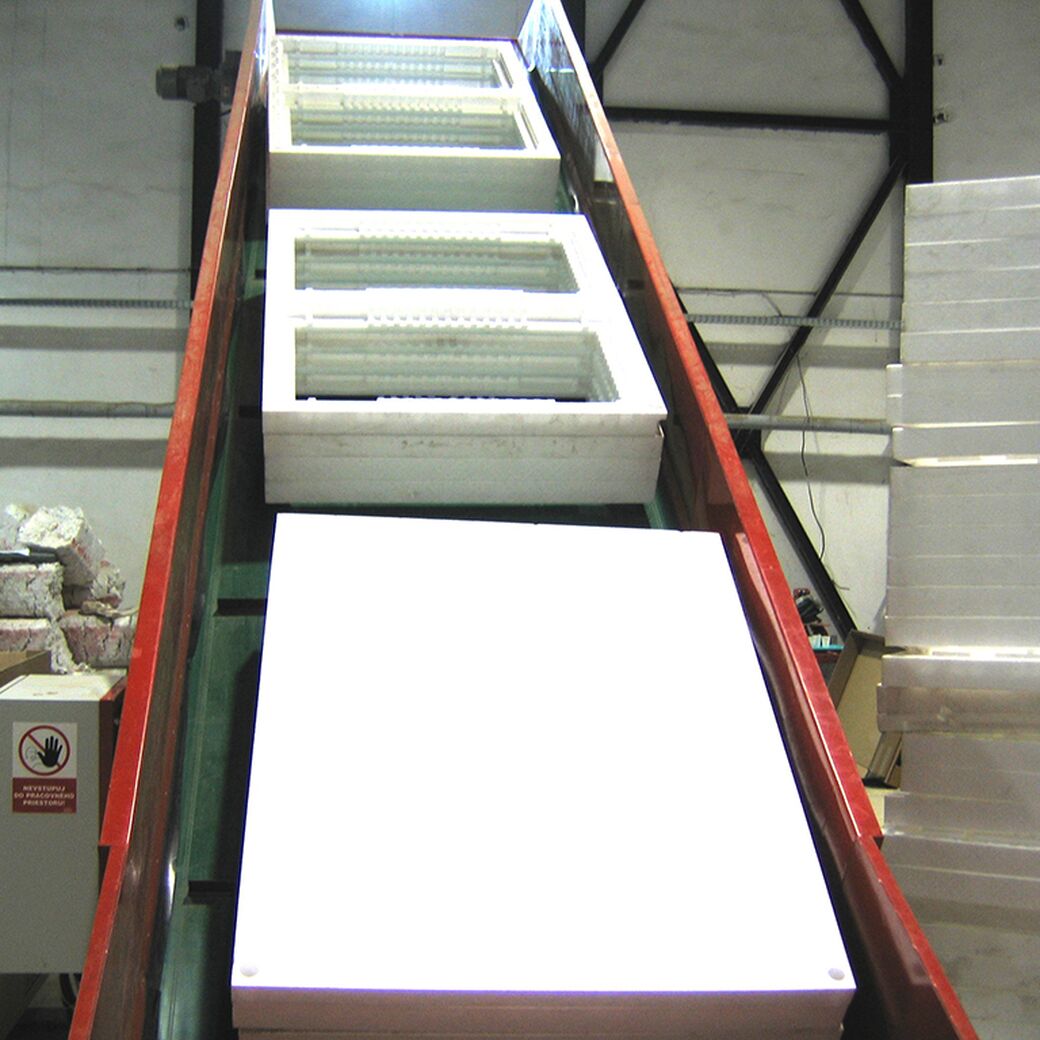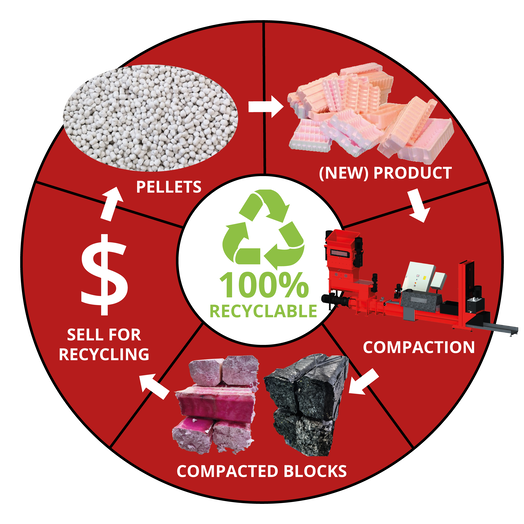
EPP recycling - How to Recycle Expanded Polypropylene with RUNI Compactor
With a RUNI compactor, you can move your EPP waste into the recycling stream and save money on storage, transportation, and fees for disposing of your waste. Furthermore, you can sell your compacted EPP blocks to recyclers and Turn your waste into value!
EPP Recycling - How to Recycle Expanded Polypropylene with RUNI Compactor
With a RUNI compactor, you can move your EPP waste into the recycling stream and save money on storage, transportation, and fees for disposing of your waste. Furthermore, you can sell your compacted EPP blocks to recyclers and Turn your waste into value!
Recycling of EPP with a RUNI Compactor
EPP is a very versatile foam with various qualities: it is very strong, flexible, has a high impact resistance, provides thermal insulation, and is water-repellent. This makes it a popular material to use for packaging products and food. Its strength, lightweight, and energy-absorbent properties also make it a very popular material in the automobile industry. Today, a lot of EPP is sent to landfills after its initial use, but since EPP is 100 % recyclable and can be recycled in a relatively easy way, this makes no sense. Luckily, the environmental benefits of EPP recycling are now more acknowledged, and the demand for recycled EPP is currently rising. A screw compactor from RUNI can ease the handling of EPP waste and smooth the process of EPP recycling.

How EPP is Recycled in a RUNI Screw Compactor
Step 1: Waste Collection
The first step in the process is to collect and sort EPP waste from other waste. This can be done internally in the company or at a municipal recycling center. The closer the EPP waste is to the RUNI machine, the lower the transportation costs will be.
Afterward, the EPP is sorted by density, as this affects which RUNI machine is optimal. Low-density EPP can be compressed in the same machine as EPS, while high-density EPP requires a machine with a melting unit to create cohesive blocks. It can also be compressed into a continuous bag.
Step 2: Compression in a RUNI Screw Compactor
Once the EPP waste is collected and properly sorted, it can be fed into the chosen RUNI machine. This can be done manually in a 45-degree funnel or by using a conveyor belt. The EPP is fed into a Heavy Duty pre-crusher, which crushes the material into small pieces. Low-density EPP is compressed into a block with a density of up to 350 kg/m3. High-density EPP is compressed in the same way, but here, a melting unit is required to ensure a solid block form. Densities of up to 400-600 kg/m3 can be achieved (depending on the material).

Step 3: Pack and Ship the Compressed EPP
Once the compressed EPP leaves the RUNI machine, it will be solid, square blocks measuring 380x380 mm. These blocks can be sold for recycling. Therefore, the waste is now a source of income rather than a cost.
The blocks are easy to stack on pallets, especially with the help of a RUNI block breaker and crane.

How Does RUNI Ensure Efficient Compression?
The machine's funnel is equipped with sensors that ensure automatic start and stop. The machine will start when the material is fed into the funnel and stop when the sensors can no longer detect anything in the funnel. The Heavy Duty pre-crusher operates efficiently with densities of up to 50 kg/m3. If the material has a higher density than this, we have other crushers with a more powerful motor that can handle it. The automatic jaws ensure a constant pressure, which creates the best final result. The RUNI screw compactor ensures compression ratios of up to 50:1, significantly reducing storage and transportation costs, while also making it possible to sell the EPP blocks.
Read more about RUNI's solutions for EPP here.
Want to Learn More About Recycling? Read More Here:
In addition to our compaction machines, we also offer machines for material separation:
Contact Us
If you need more information or have questions about RUNI products, please fill out the form below. We will get back to you as soon as possible.
Learn more about our privacy and cookie policy.


Contact US Office
+1 (630) 422-3172
runi-us@runirecycling.com
351 Country Club Drive,
Bensenville, IL 60106


